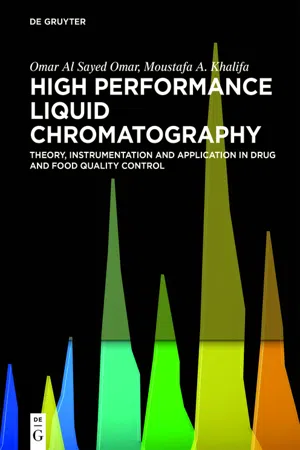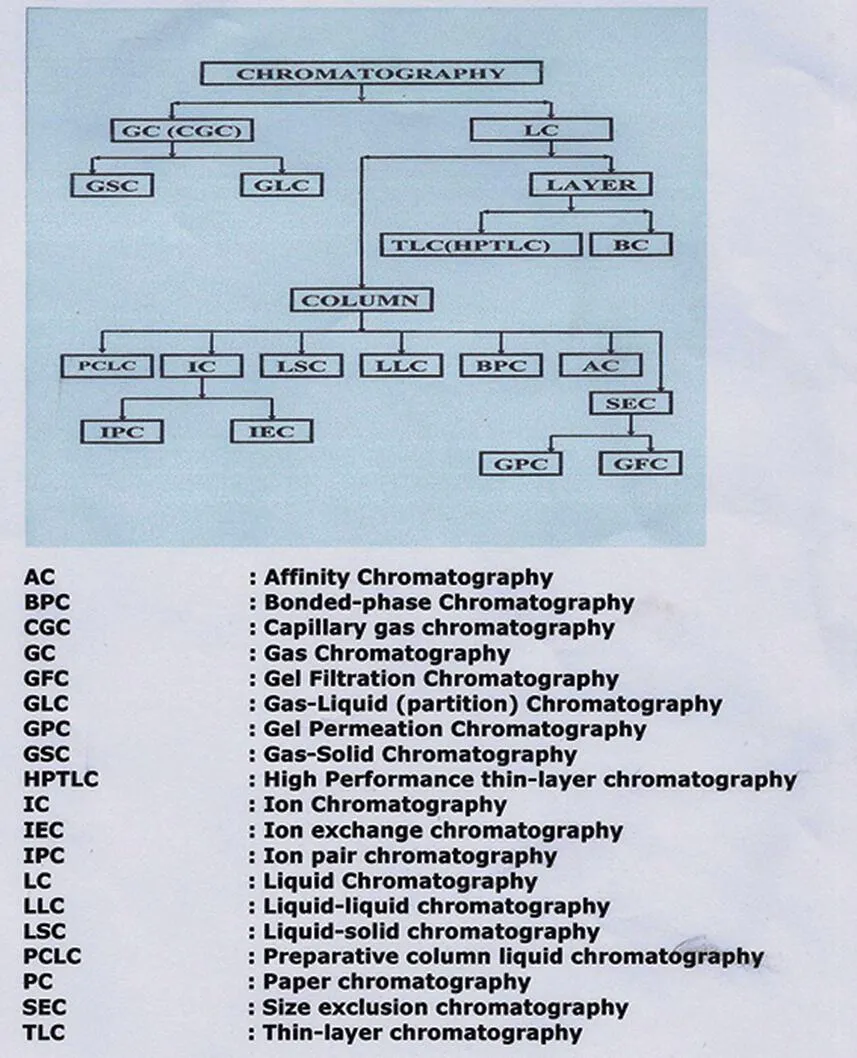
eBook - ePub
High Performance Liquid Chromatography
Theory, Instrumentation and Application in Drug Quality Control
- 322 pages
- English
- ePUB (mobile friendly)
- Available on iOS & Android
eBook - ePub
High Performance Liquid Chromatography
Theory, Instrumentation and Application in Drug Quality Control
About this book
The book provides an indispensable guide on how to use HPLC in pharmaceutical analysis and drug control. Following a hands-on approach, the authors give practical advices how to prepare stationary and mobile phases, choose a suitable detector and set up an HPLC analysis. The publication gives insight into the key pharmaceutical applications of HPLC and the latest requirements of the major regulatory agencies.
Frequently asked questions
Yes, you can cancel anytime from the Subscription tab in your account settings on the Perlego website. Your subscription will stay active until the end of your current billing period. Learn how to cancel your subscription.
No, books cannot be downloaded as external files, such as PDFs, for use outside of Perlego. However, you can download books within the Perlego app for offline reading on mobile or tablet. Learn more here.
Perlego offers two plans: Essential and Complete
- Essential is ideal for learners and professionals who enjoy exploring a wide range of subjects. Access the Essential Library with 800,000+ trusted titles and best-sellers across business, personal growth, and the humanities. Includes unlimited reading time and Standard Read Aloud voice.
- Complete: Perfect for advanced learners and researchers needing full, unrestricted access. Unlock 1.4M+ books across hundreds of subjects, including academic and specialized titles. The Complete Plan also includes advanced features like Premium Read Aloud and Research Assistant.
We are an online textbook subscription service, where you can get access to an entire online library for less than the price of a single book per month. With over 1 million books across 1000+ topics, we’ve got you covered! Learn more here.
Look out for the read-aloud symbol on your next book to see if you can listen to it. The read-aloud tool reads text aloud for you, highlighting the text as it is being read. You can pause it, speed it up and slow it down. Learn more here.
Yes! You can use the Perlego app on both iOS or Android devices to read anytime, anywhere — even offline. Perfect for commutes or when you’re on the go.
Please note we cannot support devices running on iOS 13 and Android 7 or earlier. Learn more about using the app.
Please note we cannot support devices running on iOS 13 and Android 7 or earlier. Learn more about using the app.
Yes, you can access High Performance Liquid Chromatography by Omar Al Sayed Omar,Moustafa A. Khalifa in PDF and/or ePUB format, as well as other popular books in Physical Sciences & Pharmacology. We have over one million books available in our catalogue for you to explore.
Information
1 High-performance liquid chromatography (HPLC): theoretical principles
1.1 Introduction
High-performance liquid chromatography (HPLC, formerly referred to high-pressure liquid chromatography) is, for many scientists, an essential piece of apparatus for the separation, identification, purification and quantification of various compounds, especially very polar (organic) in their complex mixtures. Users of HPLC work in a variety of fields, including analysis of pharmaceuticals, foods, waters, cosmetics, biochemicals and environmental samples [1, 2, 3, 4, 5, 6]. For HPLC analysis, mixtures from interested compounds are first dissolved in a liquid solvent and then forced to flow with mobile phase through a stationary phase in the form of column (usually stainless steel column) under high pressure. On this stationary phase (column), the mixture of chemical compounds is resolved into its components. The amount of resolution is important and is dependent upon the extent of interaction between the solute components and the stationary phase. The stationary phase is defined as the immobile packing material of the column. The moving part of the system is the mobile phase, which is a liquid. The interaction of the solute with mobile and stationary phases can be manipulated through different choices of solvents and columns. As a result, HPLC acquires a high degree of versatility not found in other chromatographic systems. Thus, HPLC has the ability to easily separate a wide variety of chemical mixtures, especially which contains thermally labile or easily oxidized compounds.
In the opposite, gas chromatography (GC) is limited in its applications, and the analysis of compounds which are thermally labile or easily oxidized is not possible. So, HPLC can fill this gap and has thus become an essential addition to GC in every analytical laboratory. Advances in HPLC technology have been assisted by the continual development of new stationary phases, improvements in instrumentation and the facility the method offers for the application of computer technology and developments in automation techniques.
It is, therefore, not surprising that the number of publications which are now dealing with HPLC exceeded than GC [7].
In this chapter we will discuss the following topics:
- What is HPLC in relation to other chromatographic techniques?
- Components of an HPLC system
- History of HPLC
- Types of separation in HPLC
- Mechanism of separation in HPLC
- Where HPLC can be used as an analytical tool?
- Advantages of modern HPLC
In this part, we will discuss the previously mentioned topics in detail.
1.2 What is HPLC in relation to other chromatographic techniques?
In chromatographic technique, the components of a chemical mixture are separated based upon the rates at which they are carried through a stationary phase (solid or liquid on solid support) by gaseous or liquid phases (mobile phase). Chromatographic method is categorized into three types based on the nature of the mobile phase [7]. The three types of phases include liquid, gases, and supercritical fluids as shown in Fig.1.1. Liquid chromatography (LC) can be performed in columns and on planar surfaces, but GC and supercritical fluid chromatography are restricted to column procedures. Column chromatography is often described as elution chromatography in which solutes are washed through stationary phase by the movement of the mobile phase (eluent).
The chromatographic separation of a mixture of various compounds depends primarily on the fact that each of them is physicochemically different from two nonmiscible phases (the stationary phase and the mobile phase). Thus, thermodynamic effects such as partition and absorption are mostly involved. Depending on the physical state of the mobile phase, a distinction is made between GC and LC (as shown in Fig.1.1). A further distinction depends on the form of stationary phase, layer or column, which leads to other classifications, thin-layer chromatography and column chromatography. The stationary phase may be solid, porous chemically modified or liquid film on solid support.

Fig.1.1: Categories of chromatography and their relationship to each other.
1.3 Components of an HPLC system
Schematic representation of the essential components of an HPLC system is found ...
Table of contents
- Title Page
- Copyright
- Contents
- Preface
- 1 High-performance liquid chromatography (HPLC): theoretical principles
- 2 HPLC columns for pharmaceutical analysis
- 3 HPLC mobile phase and HPLC pumping system
- 4 HPLC injection system (injector)
- 5 HPLC detectors
- 6 HPLC as analytical tool in drug quality control laboratories: getting started
- 7 Preparation of pharmaceutical samples for HPLC analysis in drug quality control laboratories
- 8 HPLC as analytical tool in drug quality control laboratories: qualitative and quantitative analysis
- 9 HPLC–Mass Spectrometry (HPLC–MS) and its applications in drug quality control laboratories
- 10 Safety in HPLC laboratories
- 11 Glossary
- Index